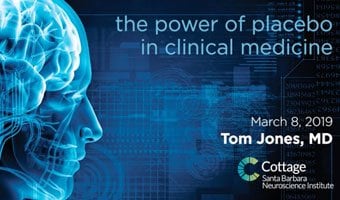Meet the SBNI Medical Director
Thomas H. Jones, MD, received his Bachelor of Arts degree from the University of Virginia (cum laude) and his medical degree from the University of Virginia School of Medicine. He completed his surgical internship, junior residency in General Surgery and a residency in Neurosurgery at Massachusetts General Hospital in Boston.
At Peter Bent Brigham Hospital and Children's Hospital Medical Center in Boston, Dr. Jones was Senior Assistant Resident in Neurosurgery, followed by his appointment as Chief Resident in Neurosurgery at Massachusetts General Hospital.
He completed three fellowships: Clinical Research Fellow at Massachusetts General Hospital, Research Fellow Harvard Medical School, and Clinical Fellow in Neurosurgery at The Lahey Clinic in Burlington, Massachusetts.
His honors and awards include the Junior American Cancer Society Fellowship, Alpha Omega Alpha Honor Medical Society, and the Shannon Scholar Award (first in class), University of Virginia.
Dr. Jones is Board Certified by the American Board of Neurological Surgery. “Santa Barbara Neuroscience Institute is a venue for applied and clinical research with unmatched technological capabilities, research and physician expertise,” Dr. Jones explained. ”Our goal is to quantify optimal patient outcomes by leveraging sound quality initiatives.”
SBNI Lunch Lecture Series

The Power of Placebo in Modern Medicine
Neuroscientist and Medical Director for the Santa Barbara Neuroscience Institute, Thomas Jones, MD, presents information on how the placebo can affect patient outcomes.
Watch full video

Pain Management - Surgeon's Perspective
Neurosurgeon and Cottage Health - Santa Barbara Neuroscience Institute's Medical Director, Thomas H. Jones, MD, shares his insight into the current state of Medical Pain Management - A Surgeon's Perspective.
Watch full video
Articles and Case Studies by Thomas Jones, MD
 "Treating Chronic Low Back Pain: Time to Refocus?"
"Treating Chronic Low Back Pain: Time to Refocus?"
NEUROtransmitter Magazine, Fall 2012
Epidemiologic studies of low back pain (LBP) have consistently shown that, in the united States, there is a lifetime prevalence of 70 percent and an incidence of up to 20 percent. Studies have also shown that 90 percent of patients with acute LBP will get better, and generally within six weeks.
Read full article
 "Treatment Strategies for Intramedullary Tumors"
"Treatment Strategies for Intramedullary Tumors"
NEUROtransmitter Magazine, Spring 2010
Intramedullary tumors (IMT) of the spinal cord are rare, representing only 2 to 4 percent of all CNS intrinsic tumors. However, in the pediatric cohort, they account for 10 percent of CNS neoplasms.
Read full article